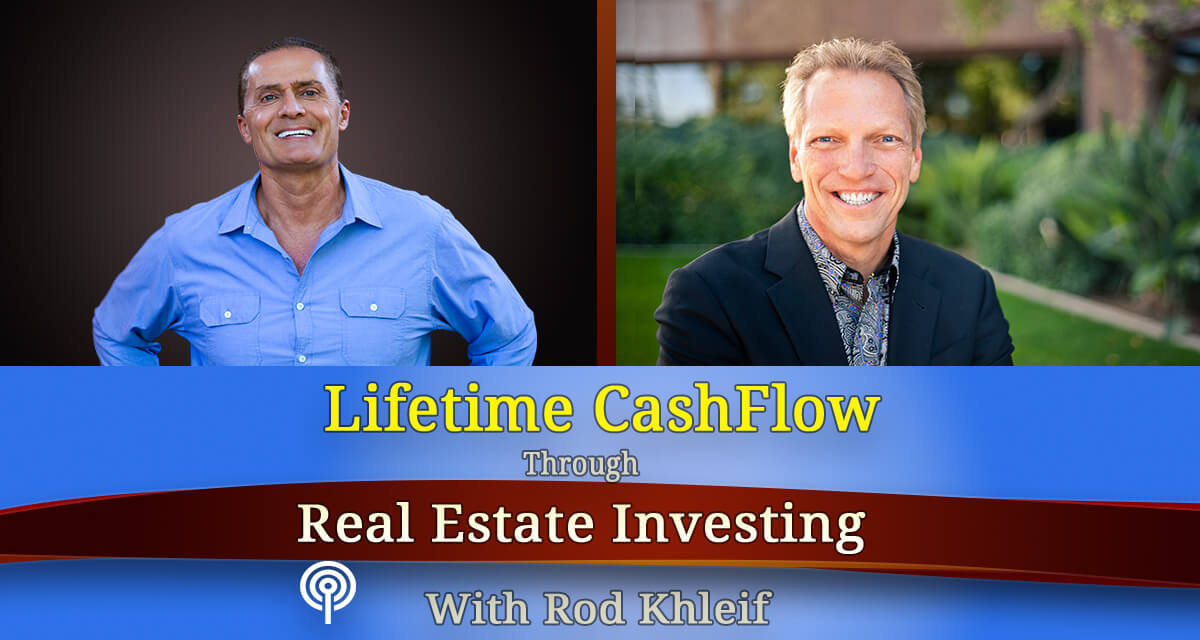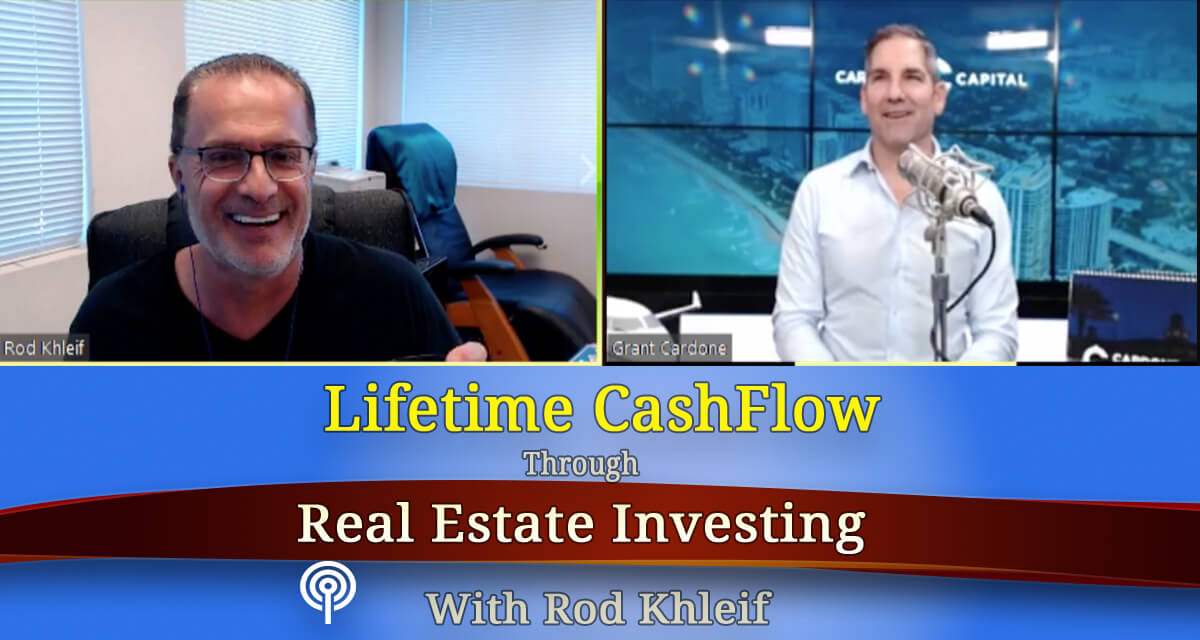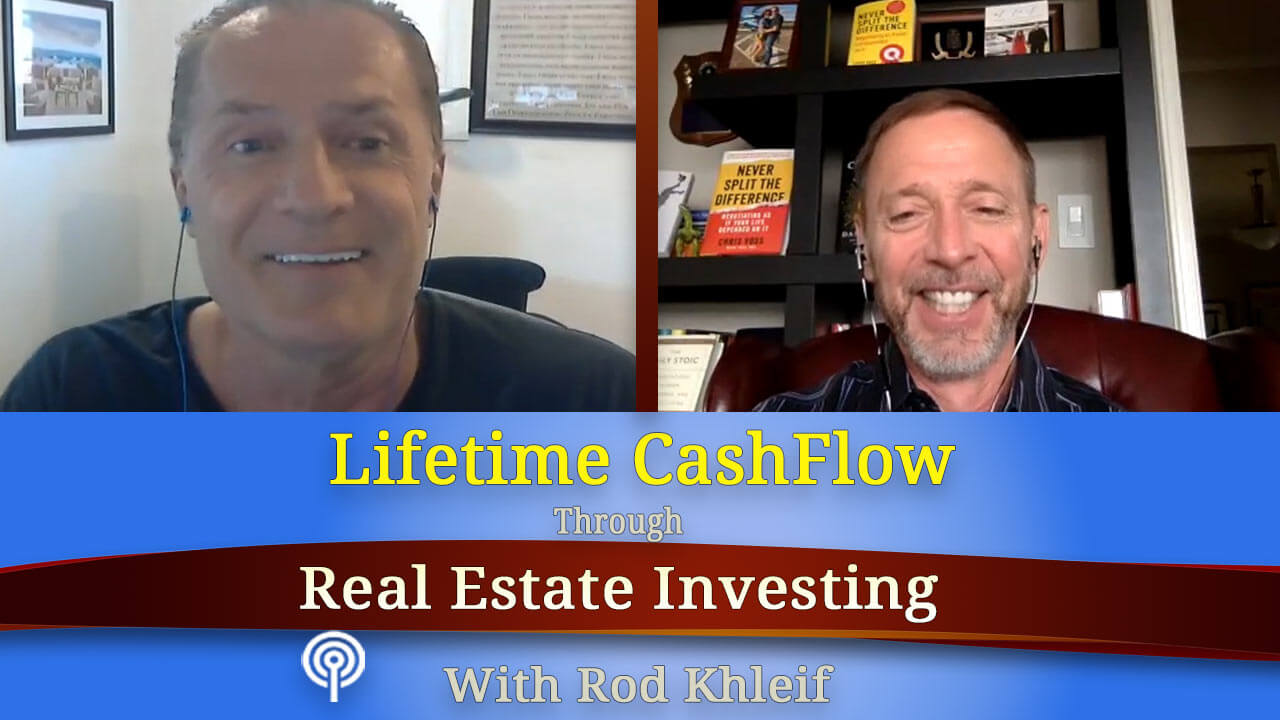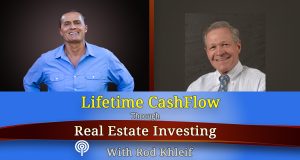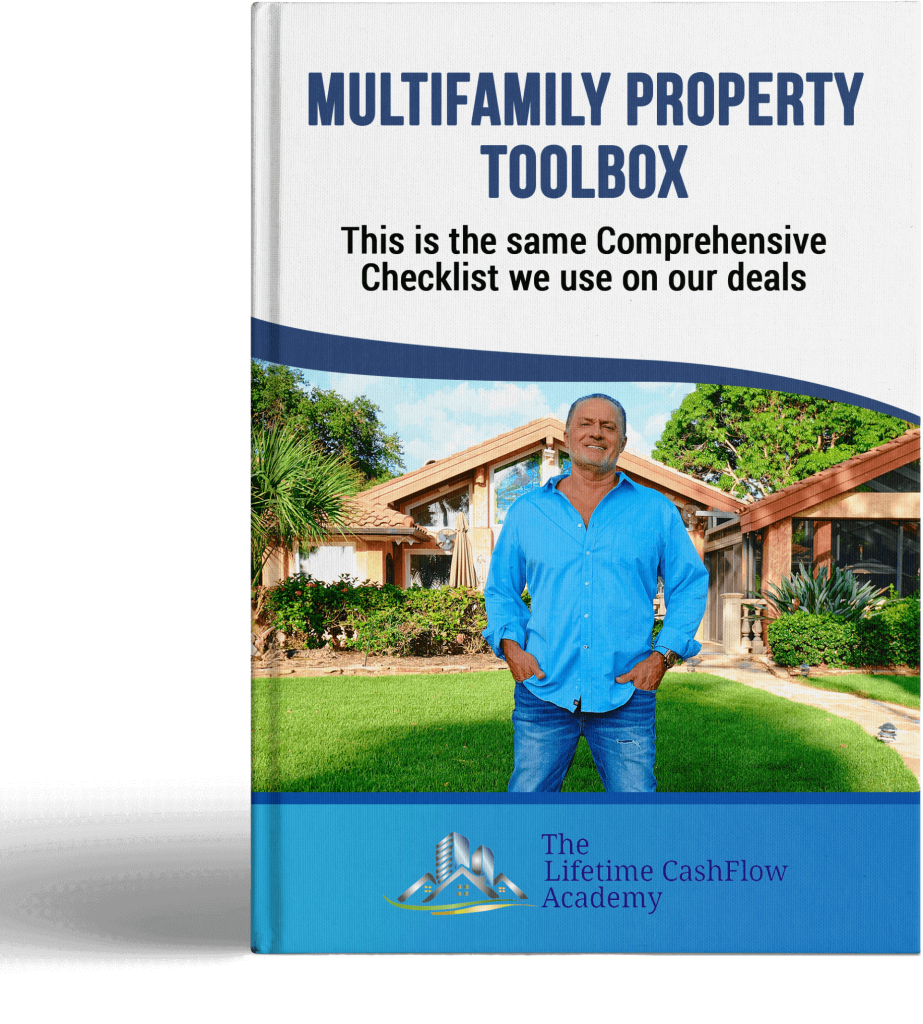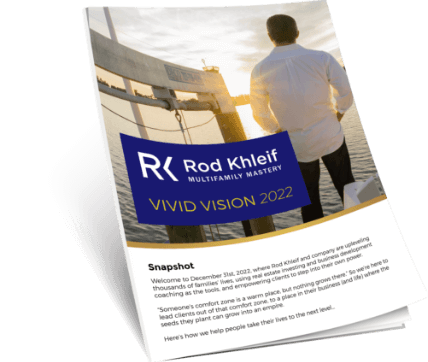Ep #433 – Multifamily Insurance with Bryan Shimeall
Here is some of what you will learn:
- How the Insurance companies react
- State of the insurance market
- The Rate, Value, Premium equation
- Pending legislation
- Loss of Business Income coverage
- Pandemic Insurance possibilities
- Key points: Roof age and Wiring
- Due diligence – ask for loss history
- Advantage of Blanket Coverage
To find out more about our guest: click here
Full Transcript Below
Ep #433 – Bryan Shimeall – Multifamily Insurance
Hi, my name is Rod Khleif and I’m the host of “Lifetime Cashflow through Real Estate Investing” Podcast and every week I interview multifamily rockstars. We talk about how they built incredible wealth for themselves and their families through multifamily properties. So hit the like and subscribe button to get notified every Monday when a new episode comes out. Let’s get to it
Rod: Welcome to another edition of How to Build Lifetime Cashflow through Real Estate Investing. I’m Rod Khleif and I’m absolutely thrilled you’re here. And I know you’re gonna get tremendous value from the gentlemen we’re interviewing today. His name’s Bryan Shimeall and he’s an insurance broker with multifamily risk advisors and we’re gonna talk about what’s happening in the insurance space with what’s happening in the world. So very excited to get into this with Brian. Welcome to show my friend
Bryan: oh well thank you for having me!
Rod: Yeah let’s have some fun today but let’s talk about the things that you’re seeing with this you know with this pink elephant in the room called Covid19 so I know that you know and we talked before we started recording and you’re starting to see a little more crime happening and with the kind of unemployment that we have that’s gonna happen. But talk about what you’re hearing. I know you ensure somewhere between 50,000 to 60,000 units which is very significant so you’ve got your finger, how many are you, is this nationwide?
Bryan: Yeah I mean you know our agency you know consists of probably about four principles here. We ensure you know probably the neighborhood of 250,000 units around the country on coast-to-coast basis. So I think unlike you know a lot of other agencies, I think we’ve got a pretty good feel from a geographical perspective what’s going on you know around the country you know that kind of takes us into a lot of our expertise you know we’re real familiar obviously with all the catastrophic type coverages people have in a coastal area you know like you there in Sarasota as well as you get into some of the Midwestern areas you know an entirely different set of risk. And so we pretty much cover the complete country in terms of assets. I don’t know if we have please you’re an asset in every state but gosh you’d be pretty close
Rod: That’s quite a bit. So talk about some of the things that you’re seeing right now happening
Bryan: Yeah you know I am seeing carriers tighten up from the coverages that they’re willing to offer. The reality is, is an insurance market right now it was a seller’s market a hard market as we call it before Covid and now that Covid has happened it has tightened up somewhat but there still is quoting that’s taking place. The carriers you know have really I’ve been impressed by the industry, how they’ve been able to shift you know and go from we’re always been such a brick-and-mortar type industry. We’re the most antiquated of all industries probably adopting you know technology you know less than most and but you know the industry has really been able to kind of shift gears. Everybody’s working remotely whether you come on underwriters, you’re trying to communicate with lender whatever it might be deals quotes are happening things are getting done yes, from a coverage standpoint it is a little bit tighter sometimes to get some concessions from carriers but they are still occurring. It really boils down I think at this point to relationships that you might have with the underwriters you know to be able to get things done. They’re trying to prioritize their day and that’s good in general what I would say what’s going on with the market right now
Rod: Okay what’s happening with rates right now? Let’s talk about rates and then then let’s talk about some of the coverages that are being explored with the crisis but let’s start with rates. What’s happening there?
Bryan: Okay, you take a look at your three core coverages on multifamily assets, you’re talking about your property, your liability, and your excess coverage you know property rates in general are going up now what has been occurring pre-Covid was at the same time that rates were going up values we’re also being increased by lenders and even carriers. And so when you look at your property insurance premium, it’s a factor of the insured value times the rate. And so when the rates going up and the value is going up your premiums going up significantly. I haven’t seen but you know at all values drop yet but you can only assume that in a market you know like this that potentially you can see you know the value is being decreased somewhat which
Rod: oh no there’ll be some flatlining and probably some contraction for sure. Okay and so the property but how about liability in excess is that rate going up as well?
Bryan: Yeah the liability markets right now I think they’re a little more difficult than the property markets. It’s just a very confined marketplace right now that’s taking place and you know what you’re seeing a lot of as carriers trying to cover their bases from an exclusionary standpoint with things like assault and battery exclusions, you are trying to, I’m not so much seeing the right jump I mean it’s a very unique market um just yesterday you know I received a quote that was one of the lowest general liability quotes I’ve gotten on a property in probably a year it really kind of surprised me, a Birmingham property. And so but you know and this one was without you know had no exclusions
Rod: That sounds familiar. That sounds familiar, I think we’re looking at I’m assuming no
Bryan: No it’s not. I wish it was for you but it’s actually not your asset.
Rod: Okay coz we’re looking at one there too anyway please continue… so you got this low premium but did you did you notice there was an exclusion?
Bryan: No
Rod: Okay
Bryan: Which is just super surprising but let me give you the company line and the industry line. I would say in general, liability rates and you know are creeping up and exclusions are creeping in to many of the policies. So you know that’s kind of what’s occurring and then your access you know Believe It or Not out of your property and liability you know carriers, it’s the excess liability that is probably the most difficult out of law right now in terms of you know rate increases and everything but pretty easy placement but the cost, nobody feels real good about their excess liability costs right now
Rod: Right right right but so, go ahead
Bryan: No it’s tough to really predict the fallout with this thing you know these insurance carriers invest so much money and the premium dollars that come in into the market you know that there is a school of thought that you know with the downturn in the market of where it is maybe these carriers will start trying to bring in premium dollars and get it invested market on the rebound you know and that’s a that’s a very legitimate you know line of thinking with regards to insurance rights. I mean you know rates and insurance industry fluctuate somewhat like the stock market but it’s just over a much longer period you know when they take a direction they’ll continue that direction for a quarter or a good part of a year but then they’ll start heading in another direction at some point. I don’t think anybody knows for sure right now
Rod: Interesting, so you know we’ve been looking at and paying attention to legislation that’s coming around forcing the insurance companies to include you know this pandemic in loss of business income can you speak to that a little bit?
Bryan: Yeah you know I’m sure some states and everything are gonna try to enforce certain things which are going to be challenged. I think the reality that everybody will be trying to get around is that the industry just does not have those dollars to pay these business income losses. It’s just simply not there. You could mandate they pay it but the dollars are not there you know when you look at but that’s kind of a, it’s very similar like terrorism insurance. When all of a sudden terrorism became you know if you know right after 9/11 that came you know something the carrier is obviously excluded and it lenders wanted coverage for you had a federal you know insurance program taking place with terrorism. And so now with each property you know your lender is going to mandate it, you purchased terrorism coverage and it’s you know it’s not cheap but it’s not super expensive for that. But the reason you have that is if you talk about nuclear war or terrorism or pandemic, there is no way that these underwriters can even predict what that might look like and if they can’t back that up with data, they’re not going to insure for it. And so I do not see carriers they’re going to offer pandemic coverage. I don’t think there’s going to be a lot there no matter what the states do about it but I do think there’s going to be a few things come out of this I think that you might have a pandemic type insurance coverage like terrorism, probably lenders will require you know I also think that there’s probably a good chance that the industry is going to contribute some sort of fine some of money you know to the government a fund or something to maybe pay out some of these losses in some way. I think that can be a possibility too. I just think people have to wrap their head around is the scope of the business income losses. You would be talking about a very large percentage if not a hundred percent of all business is submitting to carriers for coverage and that you know those dollars just aren’t there.
Rod: Yeah they’re not there and the yeah that makes complete sense to me. So I mean you know I’m thinking of Ohio you know they’re talking about forcing that and but you’re right, where’s the money come from? You know, is then the government going to shore up the insurance industry so you know where does it stop?
Bryan: Well you know I’m sure we both said it many times about being in unchartered waters but I think this is the definition of being in unchartered waters but my you know message I think to your you know viewers and listeners would be this deals are happening, quotes are happening, things are occurring, yes the pace has slowed up somewhat but you know I got a lot of my clients that are going back and revisiting deals that were, that they maybe didn’t get to three months ago
Rod: right or they’re either coming back that they didn’t get, right right right yeah no I completely agree with you. I mean I’ve got students, quite a few students that have posted in our Facebook group or called me and said hey this deal’s coming back. We thought we’d lost it. We were sick that we lost it and now we’re getting it and so a lot of that happening. So talk about you know when an operator comes to you with an asset that they want to ensure you know give some feedback or some ideas and how they can maximize coverage and minimize cost if there are strategies at all around that
Bryan: Yeah I think there are some strategies you know when you again getting back to your core you know three coverages, your property, your liability, and your access. Let’s talk about you know property first you know what’s going on in the property market right now is that most carriers are in a 15-year age limit on roofs. So you know what they’re doing specifically is if your roofs older than 15 years, they’ll cover it, but they want to factor in depreciation at the time of a client. Some people are fine with that the problem is no lenders are fine with that. And so the roof ages are a very very big deal right now and you know if your roofs are older than 15 years old, to find the coverage without depreciation, you could be paying a hefty price to an insurance carrier for that, it’s very few carriers that are doing that. And so from that standpoint you really need to pay attention to your roofs you need to pay attention to wiring this gets nice where I’m saying the carriers are tightening up a little bit if you have aluminum wiring, you really want to know what remediation method was used, was it hop along, along a con, is it pigtailed, what is it ask your sellers for documentation of roof age and of wiring. Those are two big physical factors of asset itself you know and then you can kind of get into obviously the loss history. It surprises me time and time again of how many perfect people that are purchasing an asset, don’t ask for the loss, the sellers loss runs. The second that they get the property under an LOI. And truth be told you know three years ago, you could sometimes get a quote with limited loss history. In today’s market you need a full loss history of the property
Rod: How far back? the entire ownership cycle that the previous operator has?
Bryan: Five years is, but obviously there are situations where the person, the company you’re purchasing it off of maybe they just bought it two years ago. And they probably can’t go back through sellers deep to get those losses right. They need at least three years okay I’ve lost history, five years is ideal especially if it paints a very positive picture over five years. We put it this way, if you’ve got a big major loss in a three year period I would definitely search for five years to see if that doesn’t improve the risk profile somewhat of that property
Rod: Okay interesting
Bryan: You know the next factor is valuation. Remember how I told you that you know property premium is the value times the rate? Well the value is really most of the time determined by on a square foot basis you know we’re we talking $75 square foot, $85 square foot whatever it might be, there is a per square foot valuation on it and you know if you design the coverage properly, meaning like blanket coverage is such which can be difficult to get in this market but if you can get it, you can get a little bit more aggressive on some of your valuations and tend to drive your premium down somewhat. I mean my point being is you know if I can get a property with blanket coverage, what that allows you to do let’s look at a 10 million dollar property with ten buildings, a million dollars for each building, if I can get a blanket coverage for that property, if you were to have a partial loss, keyword mean partial loss, you could access up to the full limits of the policy the ten million to address a partial loss on one building okay. If you looked at most of your lost scenarios in multi-family, it’s very rare that you lose every single building one hundred percent. They’re very few of those every year
Rod: Right
Bryan: Not saying they don’t happen
Rod: Well yeah we had one come close from a tornado in Beavercreek, Ohio but it’s finally coming online right now, eight buildings just came online but a blanket there would have definitely benefited us. But we came out smelling like a rose anyway but still you know that would have definitely helped us
Bryan: Yeah it makes, it really kind of makes the whole claim process to be honest with you even flow quicker because everybody wants their money right? When you take the blanket coverage you just remove so many questions out of the equation. So that’s something we always strive for not always possible. But that’s something that we always strive for if you can get it you can get a little bit more aggressive with your valuations you know now you got to get it approved by Fannie and Freddie usually right they’re kind of less stringent but you know but they’re usually comfortable in garden-style apartments. Your typical stuff, $75 a square foot or so in most most areas will usually you know meet their requirements and so you know
Rod: But you can’t rebuild for that. So
Bryan: Right but the argument would be I mean you know I had a guy most recently came out of the ground with a property from ground up. I think he built it for like $88 a square foot
Rod: That’s really good that’s really good actually
Bryan: It was decent place but not anything over the top or anything you know you know and you know and you’re talking to an old builder here, I was a builder-developer for ten years so you know you always you got all those infrastructure cost, all your fixed cost, architectural cost, foundations, sewer, electrical, all of those things kind of get rolled up into one he built it like $88 a square foot. So you know if you weren’t have a place blow away or burned down tomorrow you know you still got a lot of that infrastructure there including the foundations that such
Rod: That makes sense
Bryan: Yeah I don’t think many people could build, no mind you he was able to build for eighty eight because he also served as his own general contract and you know there are, there’s always a story to everything right but you know I would say yeah and you know in general $75-$85 a square foot for a garden style apartment in the southeast seems to be you know the number that most people work with but again every property is different. That’s like saying you know just depends amenities that how many stories
Rod: So what are the words of wisdom would you share with you know people that aren’t as familiar with the insurance piece of multifamily investing that you think they should know when they’re evaluating a property you know valuing a property and anything else that comes to mind?
Bryan: You know I think you know in general really looking at the profile of the tenants you know of the property and ironically I think really looking at the loss history of a property. I mean you’d be surprised you know we you’d be surprised at what you can learn by looking at the types of claims that occur at a property. I mean I’ll give you a perfect example. If I’m looking at a property, and you know it has had two stovetop fires over the past year and an assault and battery and in a slip and fall or two, I even get a mental image of that that there’s just some problems at this property. We all know that curing those take time you know
Rod: Take time and money
Bryan: Yeah take time and money yeah and to factor those things in. The other ones I’m gonna kind of bring up a point that I brought up earlier and these are what I perceive to be mistakes of that I see some of my clients make and that is, pretending that the losses don’t matter. The entire industry is built on it. You have to have them. There’s never been a deal that’s gone down that didn’t have the losses. And so get them up front because
Rod: That’s good advice
Bryan: You know I had one last year, huge, huge property I asked and asked and asked for losses told there I was told there were none, I was told that they’re forthcoming, I actually was able to get a quote subject to losses. I had to present loss as I said all right we’ll get him from the seller. Three days before closing, they presented almost five million dollars worth of losses
Rod: oh God
Bryan: Carrier pulled out of whole deal and you know three days before closing. And so it doesn’t take five million, you might be surprised sometimes what that number is. that number might be five six hundred thousand dollars might just throw it out of an underwriters ability to offer a quote
Rod: Right
Bryan: Well you know they don’t have to often these quotes. They have parameters that they can operate
Rod: Sure sure sure and it probably escalates to different people if they can do it at all right
Bryan: And so get your hands on the losses, other ones I see roofs, I see sometimes people think that they’re not going to catch these roof ages. Between the appraisal, between the insurance carriers inspection, I can assure you that the roof ages are going to surface. And they’re actually the most difficult one to actually determine because sometimes you have an inspection and mind you, the inspectors do not want to put themselves on a line and say oh this is a 2008 roof or 2010. They say roof looks good. I’m sure there’s many years left in it fully functioning is what you read in the appraisal but that doesn’t work with the carrier’s. They don’t care. They want an age. They want somebody to step up and say this is a 2010 roof yeah and so you really need to get your hands on that. The other one I’ve already talked about is wiring.
Rod: The wiring yeah
Bryan: You give me a copper, a property with copper wiring, no losses and a relatively new roof on it and even in this market. I’ll get you a quote back to you very quickly okay. That’s kind of what the current
Rod: Okay we’re gonna take just a second to hear from our sponsor. Rod, I know a lot of our listeners are wanting to take their multifamily investing business to the next level. I know you’ve been hard at work helping our warrior students do just that using our ACT methodology which is Awareness, Close, and Transform. Can you explain to the listeners how they can get our help? You bet. Guys we’ve been going nonstop for three years building an amazing community of like-minded people and our coaching students which we call our warriors have had extraordinary results. They’ve purchased thousands and thousands of units and last year we did over a thousand units with our students. And we’re looking to grow this group and take it to the next level. We’re looking for people who want to follow a proven framework that’s really step by step and then leverage our systems and network to raise equity, to find and close deals, and to build partnerships nationwide. Now our warrior community is finding success in any market cycle. So if you’re interested in finding out more about how you can become more of our incredible network and take advantage of the incredible opportunities that are coming very soon, apply to work with us at mentorwithrod.com or text “crush” to 41411. That’s mentorwithrod.com or text “crush” to 41411. Listen Brian, I really appreciate you taking the time to be on the show you’ve added a ton of value and it’s TBM is the other acronym for your company, Multifamily Risk Advisors, big hitters in the insurance space. It’s pleasure to meet you face-to-face. I know we’re working on a deal together and thanks for coming on my friend
Bryan: No thank you. Thank you for having me
Rod: Absolutely





